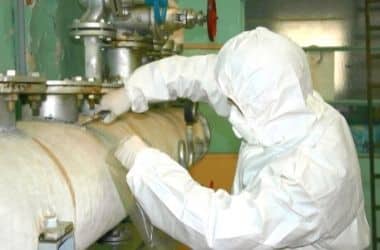The Full Refine of Accredited Asbestos Evaluating to Make Sure Residential Property Conformity
In the realm of property monitoring and compliance, the process of recognized asbestos testing stands as a crucial part to guarantee the safety and well-being of occupants. From the initial analysis to the last interpretation of results, each phase plays an important duty in figuring out the presence of asbestos within a building.
Accredited Asbestos Testing: First Evaluation
In performing the initial analysis for recognized asbestos screening, a thorough evaluation of the property's materials is critical to precisely recognize possible asbestos-containing products. Special focus is given to products that are vulnerable to damage or disturbance, as these circumstances can launch hazardous asbestos fibers right into the air.
Approved asbestos assessors adhere to rigorous methods established by regulative bodies to make sure the accuracy and integrity of the screening process. By carefully recording searchings for and making use of advanced testing methods, assessors can offer homeowner with a thorough record outlining the presence of asbestos, if any kind of, and the recommended steps for mitigation or removal. This initial assessment establishes the foundation for subsequent activities to attend to asbestos issues and ensure the safety and security and conformity of the property.
Sample Collection Procedures for Asbestos Evaluating
Effective example collection procedures are necessary in guaranteeing exact asbestos testing outcomes and compliance with governing standards. When accumulating samples for asbestos screening, it is vital to comply with strict protocols to minimize the risk of contamination and make certain the integrity of the outcomes.
Firstly, it is important to recognize the thought asbestos-containing products (ACMs) and focus on sampling locations based on elements such as the product's condition, accessibility, and possibility for disruption. Asbestos Testing. Samples need to be gathered from numerous places within the residential or commercial property to give a thorough evaluation of asbestos presence
Throughout sample collection, certified specialists must wear ideal personal safety devices (PPE) to safeguard versus asbestos exposure. They need to use tidy tools, such as non reusable gloves and plastic bed linen, to avoid cross-contamination in between samples. Samples need to be thoroughly collected making use of a defined technique, such as wet wiping or coring, and firmly sealed in closed containers to maintain their integrity throughout transport to the lab for evaluation.
Research Laboratory Analysis Refine for Asbestos Examples
Upon completion of the example collection process, the asbestos samples are carefully transported to approved labs for precise analysis. The initial action in the lab evaluation process is sample preparation, where the collected examples are very carefully refined to draw out the asbestos fibers.

Once the evaluation is total, a comprehensive report is created, detailing the findings and confirming whether asbestos is existing, the kind of asbestos fibers identified, and the focus degrees. This information is crucial for property proprietors to take the required steps to make certain compliance with asbestos regulations and secure the health and wellness of occupants.

Coverage and Interpretation of Asbestos Test Outcomes
Certified asbestos screening labs give detailed reports that use crucial insights into the existence, kind, and concentration degrees of asbestos fibers found in examples collected from properties. These reports are essential for homeowner and supervisors to understand the threat positioned by asbestos and make educated decisions concerning its administration or elimination. The reports commonly include details on the methods utilized for screening, the locations where examples were taken, the kind of asbestos recognized (such as chrysotile, amosite, or crocidolite), and the concentration levels of asbestos fibers identified.
Interpreting these outcomes calls for knowledge to analyze the potential health and wellness threats related to asbestos exposure, establish the appropriate program of activity, and make certain regulatory compliance (Asbestos Testing). Depending this website upon the searchings for, recommendations may range from proceeded surveillance and upkeep to encapsulation or complete asbestos abatement. Residential property proprietors should thoroughly examine these records and talk to asbestos specialists to develop an extensive strategy for resolving any kind of asbestos concerns identified
Ensuring Home Conformity With Asbestos Rules
To keep adherence with asbestos laws, homeowner should vigilantly execute procedures to make sure compliance with appropriate legislations and guidelines. This includes conducting regular asbestos inspections by accredited professionals to identify any kind of presence of asbestos-containing products within the residential property. Once asbestos is determined, home click here to find out more proprietors need to adhere to asbestos monitoring prepares that summary appropriate containment, removal, or encapsulation treatments to stop direct exposure and spread of asbestos fibers. Compliance likewise involves maintaining in-depth records of asbestos testing, maintenance, and removal activities for examination objectives.
Property proprietors need to give asbestos understanding training to workers and occupants to minimize the risk of asbestos exposure and ensure correct handling of materials that may include asbestos. Additionally, it is essential to stay informed about any kind of updates or adjustments in asbestos laws to readjust management techniques accordingly. By proactively resolving asbestos compliance demands, homeowner can develop a risk-free setting for passengers and mitigate prospective legal and health dangers connected with asbestos exposure.
Final Thought
Finally, certified asbestos testing is an important process for making certain residential or commercial property compliance with laws. The preliminary evaluation, sample collection treatments, research laboratory analysis, and interpretation of outcomes are very important steps in this process. By complying with these procedures, building owners can identify and attend to any type of asbestos hazards existing, protecting the health and safety of residents and maintaining compliance with regulatory needs.